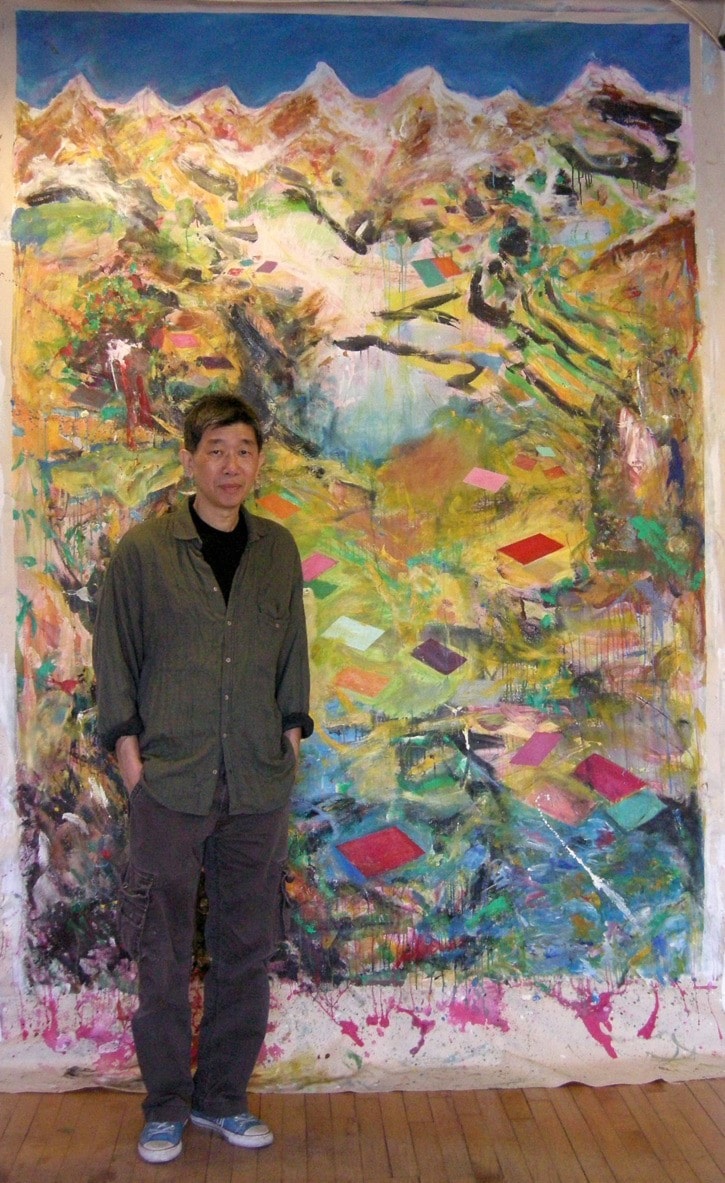Artist David Cheung will be at the Revelstoke Museum & Archives next week to talk about his interactive art project Rocky Railway High, which pays tribute to the thousands of Chinese labourers that helped build the Canadian Pacific Railway through British Columbia.
Cheung, a Toronto-based contemporary artist, will be at the museum on Tuesday, July 19 from 11 a.m. to 2 p.m. to answer questions about the project. People will also be able to submit writing or artwork to the project. Admission is free during his visit.
Cheung and his two sons, will be spending a month travelling by train and bicycle along the stretch of railway built by Chinese labourers. The aim of the trip is to learn about the railway workers and their families for the project.
The trip begins in Revelstoke and will end at a cemetery in Victoria, where some of the workers were buried.
A blog will be kept to document the trip with text journals, video clips and images of on-site artworks.
Cheung will create a series of multi-media artwork based on information collected on his trip and he also looks to collect at least 5,000 pieces of artwork and writing from the public.
The works will be shown at an expedition in British Columbia and after the public submissions will be sent to Guangdong Province in China to be buried at a permanent site to represent the symbolic return of the Chinese workers to their homeland.
***
The following is an article the Times Review published about David Cheung in the April 13, 2011 edition.
Artist looks to bring closure to lives of railway workers
By Alex Cooper
David Cheung is a Toronto based artist who’s wife is the descendent of one of the Chinese immigrants who worked on the railway in the 1880s. Over the years, Cheung started researching the plight of his wife’s ancestors.
“In a way I’m appalled by the treatment. Not only during the conception of the railway but after the railway, also,” said Cheung. “I didn’t really know much about this part of the history but when you research more into and try to digest it, it was a horrific experience.”
Because of that, he has embarked on project called Rocky Railway High (Closure) in an attempt to symbolically collect the spirit of the many Chinese workers who died building the railway and return them home to China.
He will be doing so by travelling through British Columbia from Revelstoke to Victoria, collecting 5,000 pieces of art or writing created by communities along the rail line.
Upwards of 15,000 Chinese workers migrated to Canada to help build the railway through the province. They were paid less than their white counterparts and had worse living conditions. The number of Chinese workers that died ranges from 600 to more than 4,000 depending on the source. After the railway was finished, they were cast adrift and faced a huge amount of discrimination.
“The Chinese were afraid to walk on the street at the time because they would get beat up. They risked their lives to build the railway, which formed a part of Canada,” he said. “Then, they couldn’t even walk on the street... You put yourself in their situation – what a horrific life.”
Cheung immigrated from China to Canada in the early-70s to attend the Ontario Academy of Arts. Since settling in Toronto he has built a successful career, displaying his work at numerous galleries in Toronto, across Canada, the U.S., Europe and Asia.
His current project began when he took part in the 2002 Contemporary Art Forum in Kitchener, Ont. There, he set up an installation of a teepee covered in Chinese art called Power to the First People.
The goal, he said, was to pay tribute to both the First Nations people and Chinese Canadian who were deprived of their rights for decades.
Rocky Railway High (Closure) stemmed from that project as a way of completing the journey and bringing the spirits of the deceased workers home. The trip from Revelstoke to Victoria is an important element of the project.
“It’s a conceptual way of bringing the Chinese who died in the mountains home to Guangdong, China,” he said. “It’s a really important tradition or custom. Even workers who left their home in China, when they die they always want to be buried at home.”
On his blog, Cheung has posted several paintings that will be part of the exhibit. Each one represents different cities along the railway line through B.C. – Kamloops, Chase, Salmon Arm, Revelstoke and more.
The works seek to fuse classical Chinese landscape paintings with abstract western art – something Cheung has been interested in doing for a number of years.
The final exhibit will also include sculptures, photography and digital media. He hopes to show it at a gallery in British Columbia and eventually in China.
“Symbolically we want to bring them home, to bury them,” he said. “We will arrange a permanent site to bury the 5,000 pieces or art work or writing that we collect from the public representing these workers.”
To learn more about Rocky Railway High (Closure) and find out how to submit a piece or art, visit www.rockyrailwayhigh.com.
